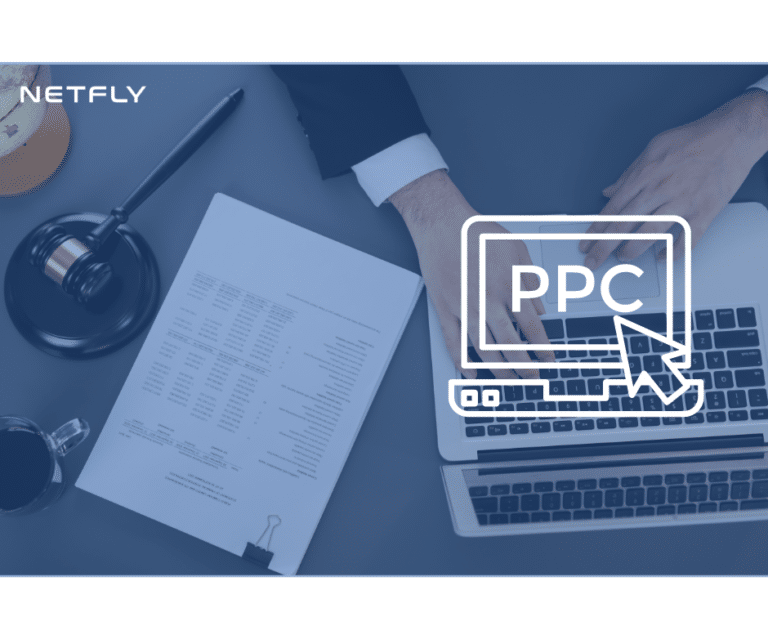When it comes to optimizing law firm websites for peak performance, understanding the nuances of conversion tactics is crucial. From strategic call-to-action placements to crafting compelling content, each element plays an essential role in driving client engagement and ultimately, conversions. By delving into the intricacies of website optimization tailored specifically for legal professionals, you can discover a world of possibilities to enhance your online presence and solidify your firm’s credibility in the digital domain.
Key Takeaways
- Implement clear and compelling calls-to-action for higher conversions.
- Analyze website performance data to optimize conversion tactics.
- Utilize A/B testing to enhance call-to-action effectiveness.
- Provide multiple contact options for improved client interaction.
- Monitor and adjust based on conversion metrics for peak performance.
Why Law Firm Websites Need Optimization
In the competitive landscape of the legal industry, optimizing law firm websites is vital for maximizing visibility, client engagement, and ultimately, firm growth. By strategically incorporating SEO benefits into your website, you can greatly enhance your online presence, making it easier for potential clients to find you among a sea of competitors. Effective SEO strategies not only drive more traffic to your site but also improve the quality of that traffic, ensuring that visitors are more likely to be genuinely interested in your legal services.
Legal branding is another essential aspect that optimization addresses. Your website is often the first point of contact for potential clients, and it serves as a reflection of your firm’s professionalism, expertise, and values. Through optimization techniques, you can tailor your website to convey a strong and consistent brand image that resonates with your target audience. This cohesive branding not only fosters trust and credibility but also sets you apart from other law firms in a crowded market.
In today’s digital age, where the majority of clients turn to the internet to find legal services, neglecting the optimization of your law firm website can put you at a significant disadvantage. By aligning your SEO strategies with your legal branding efforts, you can create a powerful online presence that not only attracts more clients but also reinforces your firm’s reputation and authority in the legal industry.
Understanding Conversion Tactics
Understanding how to implement effective conversion tactics on your law firm website can greatly impact your client acquisition and retention rates. Conversion strategies play an important role in optimizing your website performance to attract and retain potential clients effectively.
To enhance conversion rates, start by analyzing your current website performance data. Utilize tools like Google Analytics to identify areas where visitors may be dropping off or not engaging as intended. By understanding user behavior on your site, you can pinpoint specific pages or elements that may need optimization.
Implement clear and compelling calls-to-action (CTAs) strategically throughout your website. These CTAs should guide visitors on the desired actions you want them to take, whether it’s scheduling a consultation, downloading a resource, or subscribing to your newsletter. A/B testing different CTA variations can help determine which ones resonate best with your audience.
Additionally, streamline your contact forms to make it easy for potential clients to reach out. Simplify the form fields, reduce unnecessary steps, and make sure that submission buttons are prominent. Providing multiple contact options, such as phone numbers and live chat support, can further improve accessibility and encourage conversions.
Key Elements of Website Optimization
To optimize your law firm website effectively, focus on integrating key elements that enhance user experience and drive conversion rates. Implementing robust SEO strategies is important for improving your website’s visibility and attracting relevant traffic. Conduct thorough keyword research to understand what terms potential clients are searching for and optimize your website content accordingly. Utilize on-page SEO techniques such as meta tags, headings, and image alt text to improve your site’s search engine ranking and increase organic traffic.
Conversion rates play an important role in the success of your website. Make sure that your website is user-friendly and easy to navigate to encourage visitors to take desired actions, such as contacting your firm or scheduling a consultation. Incorporate clear calls-to-action (CTAs) strategically throughout your website to guide users towards conversion points. A/B testing different CTAs can help you identify which ones resonate best with your audience and lead to higher conversion rates.
Regularly monitor and analyze your website’s performance using tools like Google Analytics to track key metrics such as bounce rate, time on page, and conversion rates. Use this data to make informed decisions about optimizing your website further for better results. By continuously refining your SEO strategies and enhancing user experience to boost conversion rates, you can maximize the effectiveness of your law firm website and attract more qualified leads.
Enhancing User Experience for Conversions
To optimize your law firm website for peak performance, it’s essential to enhance user experience for conversions.
Focus on website navigation optimization and conversion-driven design to guide visitors seamlessly towards taking desired actions.
Website Navigation Optimization
Optimizing law firm websites through strategic navigation enhancements is crucial for maximizing user experience and driving conversions effectively. To boost conversion rates, conduct usability testing to refine navigation design. Clear, intuitive navigation guarantees visitors can easily find essential information, leading to improved user engagement and increased conversion likelihood.
Simplify menus, use descriptive labels, and employ logical pathways to guide users seamlessly through your site. Enhance the mobile navigation experience for on-the-go clients, optimizing for smaller screens and touch interactions.
Conversion-Driven Design
Enhance user experience and drive conversions effectively through a strategic focus on conversion-driven design principles. Implementing conversion strategies within your website’s design is essential for enticing visitors to take desired actions. Start by simplifying navigation and ensuring a seamless flow from landing to conversion pages.
Utilize clear calls-to-action strategically placed throughout the site to guide users towards conversion points. Incorporate responsive design principles to optimize user experience across devices, reducing bounce rates and increasing conversion rates. A/B testing different design elements can provide valuable insights into what resonates best with your audience, allowing for continuous optimization.
Mobile Optimization Strategies
When optimizing your law firm’s website for mobile performance, focus on Mobile Design Essentials, ensuring your site is visually appealing and functional on a variety of devices.
Speed and Responsiveness are vital factors that can impact user experience and search engine rankings, so prioritize these elements in your optimization strategy.
User-Friendly Navigation plays a key role in keeping visitors engaged and guiding them towards conversion actions, making it essential for a successful mobile website.
Mobile Design Essentials
To ensure peak performance in your law firm website, prioritizing mobile design essentials is essential for reaching and engaging potential clients effectively.
Mobile responsiveness is vital, ensuring that your website functions seamlessly across various devices, providing a user-friendly experience.
Design aesthetics play a significant role in capturing visitors’ attention and conveying professionalism. Opt for a clean and modern design that’s visually appealing yet easy to navigate on smaller screens.
By focusing on mobile optimization strategies, you can enhance user engagement, increase conversions, and ultimately drive growth for your law firm.
Stay attuned to the ever-evolving mobile landscape, adapting your design to meet the needs and expectations of mobile users in the legal sector.
Speed and Responsiveness
Prioritizing speed and responsiveness is vital in optimizing your law firm website for peak performance on mobile devices. Improving load times is essential for enhancing user experience and boosting conversion rates.
Implement responsive design strategies to guarantee that your website adapts seamlessly to various screen sizes, providing a consistent and user-friendly experience across devices. Fast-loading pages not only satisfy visitors but also positively impact your search engine rankings, ultimately driving more organic traffic to your site.
User-Friendly Navigation
Enhance user engagement and streamline navigation on your law firm website with strategic mobile optimization strategies. By upholding accessibility standards, you guarantee that all users, including those with disabilities, can easily navigate your site. This inclusivity not only broadens your audience reach but also improves user satisfaction, leading to higher conversion rates.
Optimize your website for mobile devices by implementing responsive design, clear menu structures, and intuitive search functionality. Mobile users expect fast loading times and seamless navigation, so prioritize these aspects to enhance their browsing experience. A user-friendly mobile site not only boosts your search engine rankings but also increases the likelihood of visitors converting into clients.
Content Optimization for Legal Websites
When aiming to elevate the performance of law firm websites, strategic content optimization becomes a pivotal factor in enhancing online visibility and engagement. To guarantee your legal website is optimized for peak performance, consider the following:
- Keyword Research: Conduct thorough keyword research to identify relevant terms and phrases that your target audience is searching for. Integrate these keywords strategically into your content to improve SEO visibility.
- High-Quality Content: Focus on creating high-quality, informative content that addresses the needs and questions of your potential clients. Well-crafted content not only attracts visitors but also establishes your authority in the legal field.
- Optimized Meta Tags: Craft compelling meta titles and descriptions for each page of your website. These elements not only impact search engine rankings but also influence user clicks, driving more traffic to your site.
- Internal Linking Structure: Develop a coherent internal linking structure to guide visitors to relevant pages within your website. This not only enhances user experience but also helps search engines understand the hierarchy and relevance of your content.
- Regular Updates: Keep your website content fresh and up-to-date. Search engines favor websites that consistently provide new information. Regular updates demonstrate your commitment to staying current in the legal landscape.
Implementing Call-to-Action Techniques
To maximize the effectiveness of your law firm website, incorporating compelling call-to-action techniques is essential for driving visitor engagement and conversion. Implementing persuasive copywriting in your call-to-action buttons can have a substantial impact on lead generation. Crafting clear and action-oriented statements such as ‘Contact Us Now for a Free Consultation’ can prompt visitors to take the desired action.
A/B testing strategies play an important role in optimizing call-to-action buttons. By testing different variations of your call-to-action text, color, placement, and design, you can determine which elements resonate best with your audience and drive higher conversion rates.
Conversion rate analysis is equally important in evaluating the effectiveness of your call-to-action techniques. By tracking and analyzing the conversion rates of different call-to-action implementations, you can refine your strategies for better results.
Tracking and Analyzing Conversion Metrics
Tracking and analyzing your law firm website’s conversion metrics is essential for evaluating the effectiveness of your online marketing strategies.
- Utilize Analytics Tools: Implement robust analytics tools like Google Analytics to track and measure conversion rates accurately.
- Set Clear Conversion Goals: Define specific conversion goals such as form submissions, appointment bookings, or phone calls to focus your analysis.
- Segment Data Effectively: Break down your conversion data by traffic sources, demographics, and behavior to identify patterns and optimize accordingly.
- A/B Testing for Optimization: Conduct A/B tests on key elements like call-to-action buttons or landing page content to improve conversion rates.
- Regularly Monitor and Adjust: Continuously monitor your conversion metrics, analyze the data trends, and make informed adjustments to enhance performance.
Analyzing data from your website’s conversion metrics provides valuable insights into visitor behavior, allowing you to refine your online strategies for maximum impact. By understanding and optimizing conversion rates, you can better tailor your digital marketing efforts to attract and convert potential clients effectively.
Stay proactive in tracking and analyzing these metrics to drive continuous improvement and achieve your law firm’s growth objectives.
Frequently Asked Questions
How Can Law Firms Measure the Success of Website Optimization?
To measure website optimization success, focus on ROI measurement and user engagement. Utilize A/B testing and Google Analytics for data-driven insights. Track conversions, click-through rates, and time spent on key pages.
Analyze bounce rates and user behavior to gauge effectiveness. By monitoring these metrics, law firms can assess the impact of optimization efforts and make informed decisions to enhance their online presence.
What Are the Best Practices for Mobile Optimization in Legal Websites?
When optimizing legal websites for mobile, prioritize mobile responsiveness and user experience. Guarantee your site adapts seamlessly to different devices for easy navigation.
Prioritize fast loading times to enhance user satisfaction and reduce bounce rates. Implement intuitive design elements and clear calls-to-action for effective engagement.
How Can Call-To-Action Techniques Be Tailored for Legal Audiences?
Feeling overwhelmed by all the calls to action flooding the legal world? Well, fear not!
When tailoring these prompts for legal audiences, focus on enhancing client engagement and user experience. Craft compelling CTAs that drive lead generation and boost conversion rates.
What Tools Can Law Firms Use to Track Conversion Metrics Effectively?
When tracking conversion metrics for law firms, leverage specialized tools like Analytics software. These tools offer insights into lead generation and conversion rates, crucial for optimizing website performance.
By utilizing such resources, you can precisely monitor the effectiveness of your online strategies, enabling strategic adjustments for improved results.
Stay data-driven and make informed decisions based on the analytics provided by these conversion tracking tools.
Are There Specific Content Optimization Strategies for Legal Websites?
So, you want to enhance your legal website’s performance?
Explore the world of SEO keywords and create engaging legal content. Enhance your site with strategic metadata and informative law blogs.
These optimization strategies can attract more visitors and improve your online presence. Stay ahead by continuously refining your content to meet the needs of your audience and search engines.
Final Thoughts
You’ve learned the importance of optimizing your law firm website for peak performance and maximizing conversions.
By focusing on user-friendly navigation, mobile optimization, and tracking conversion metrics, you can drive quality traffic and establish credibility in the competitive legal industry. Keep refining your website elements to guarantee success in client conversions.










